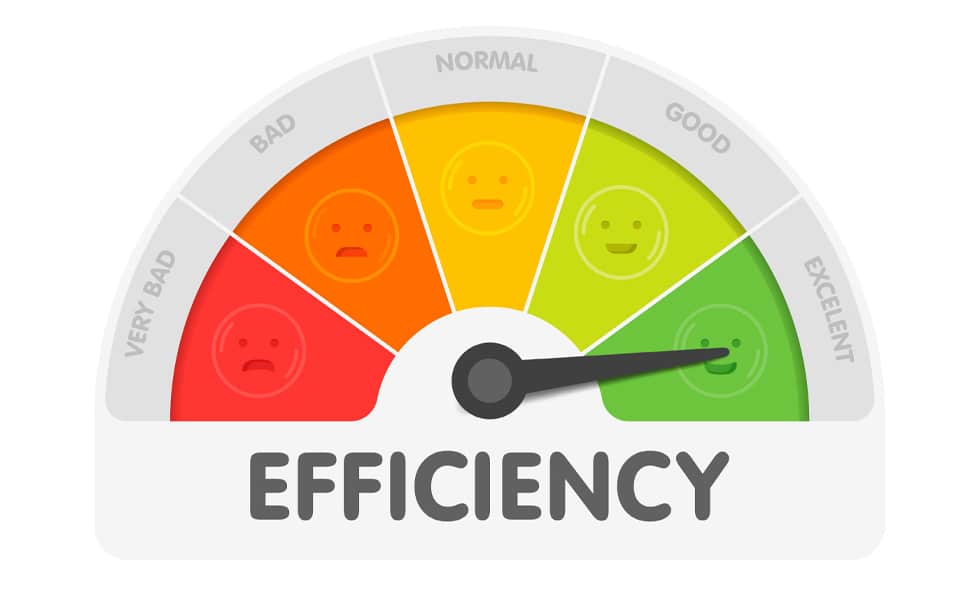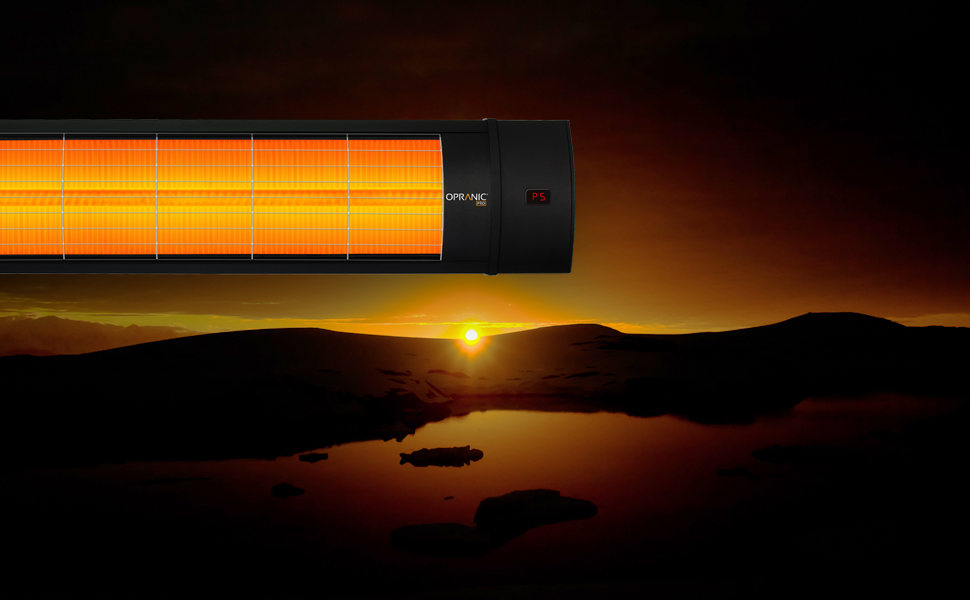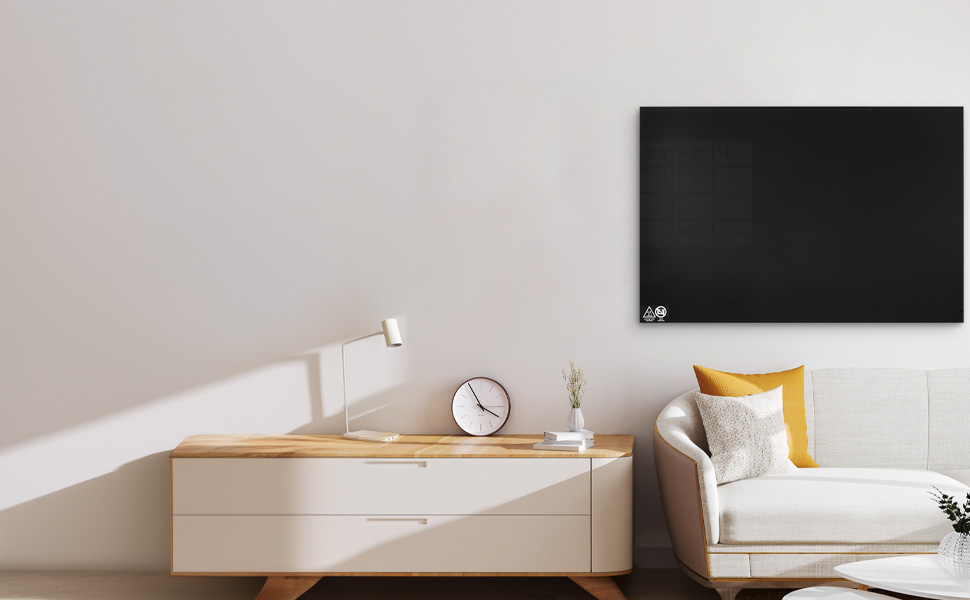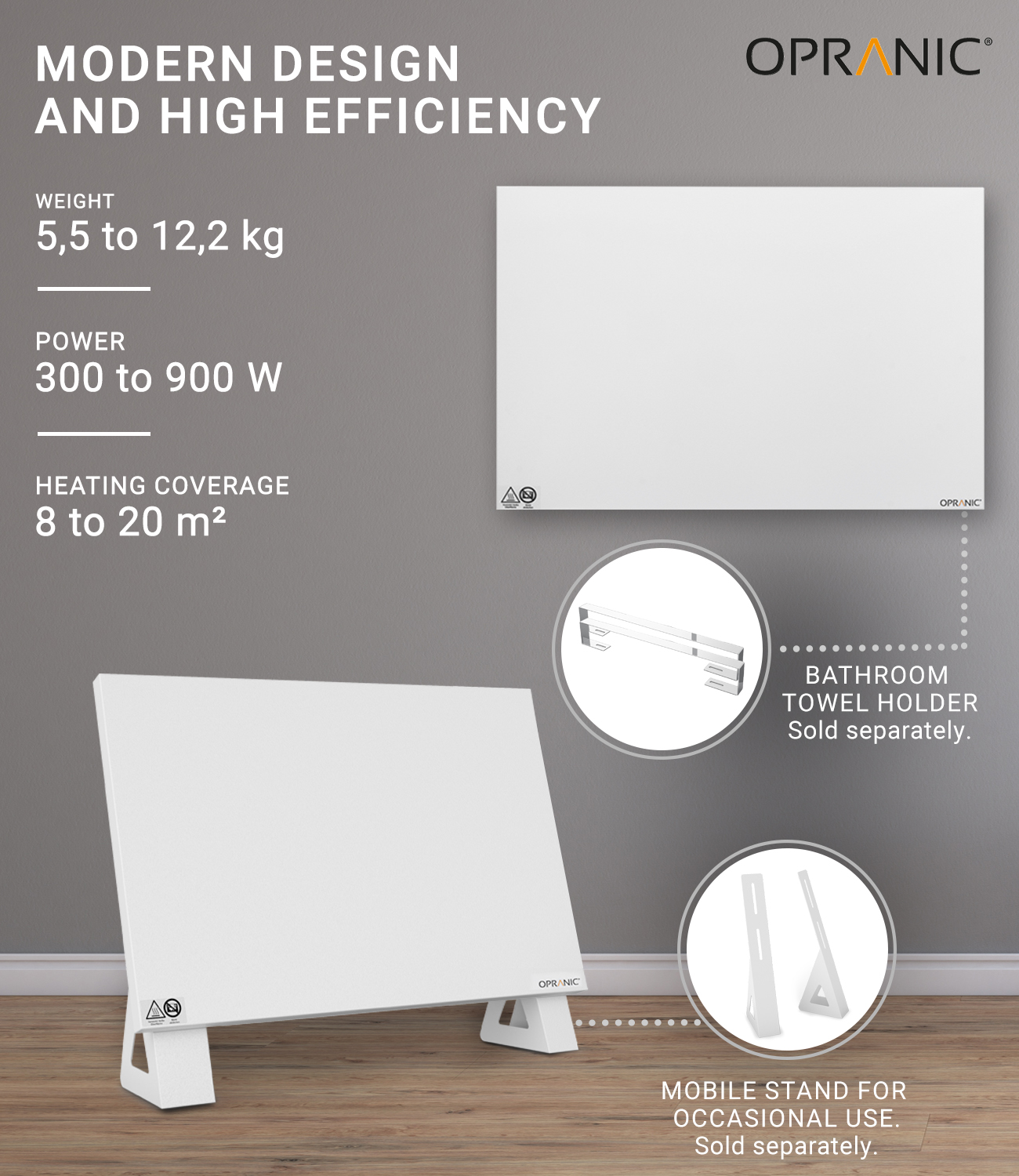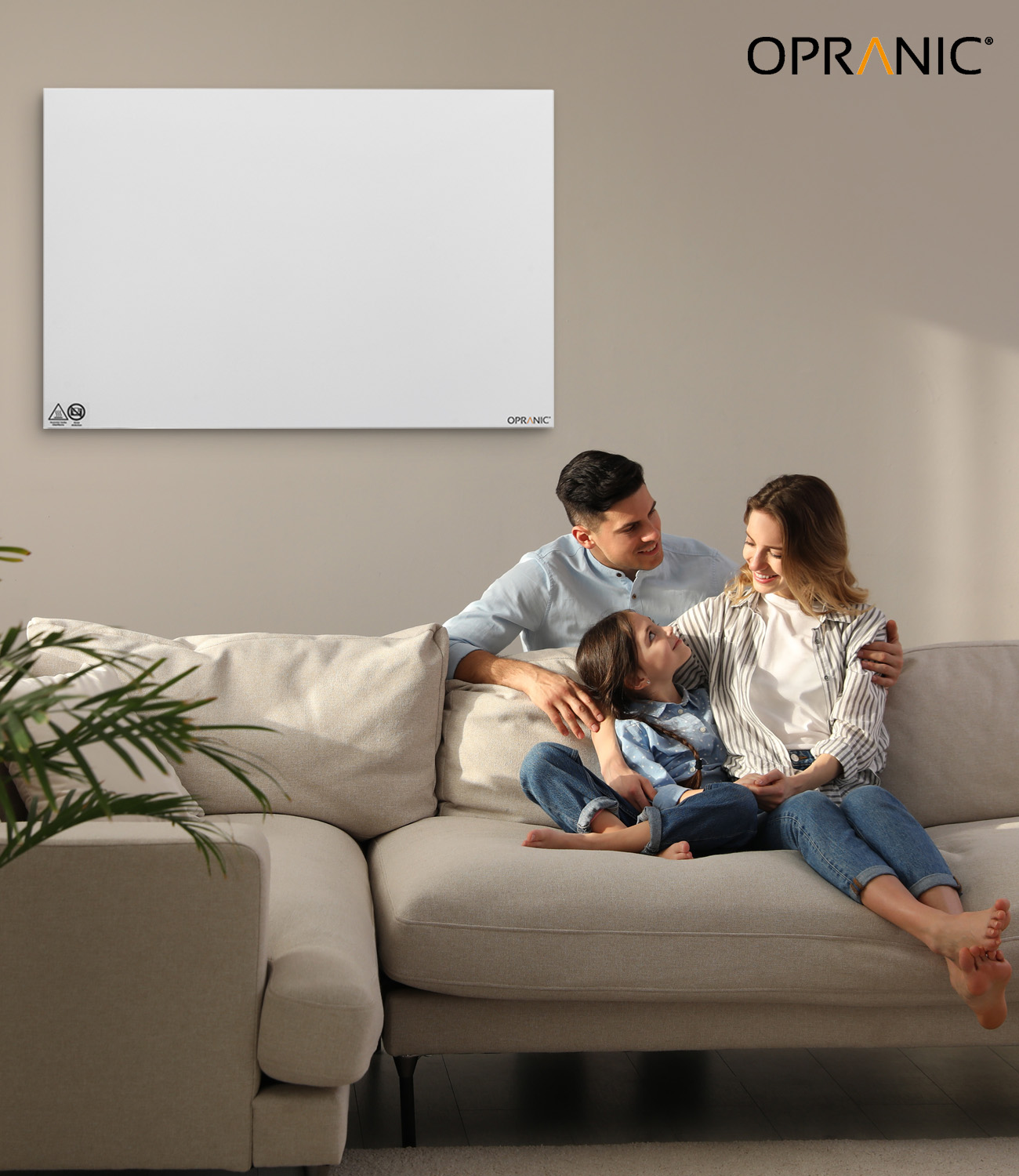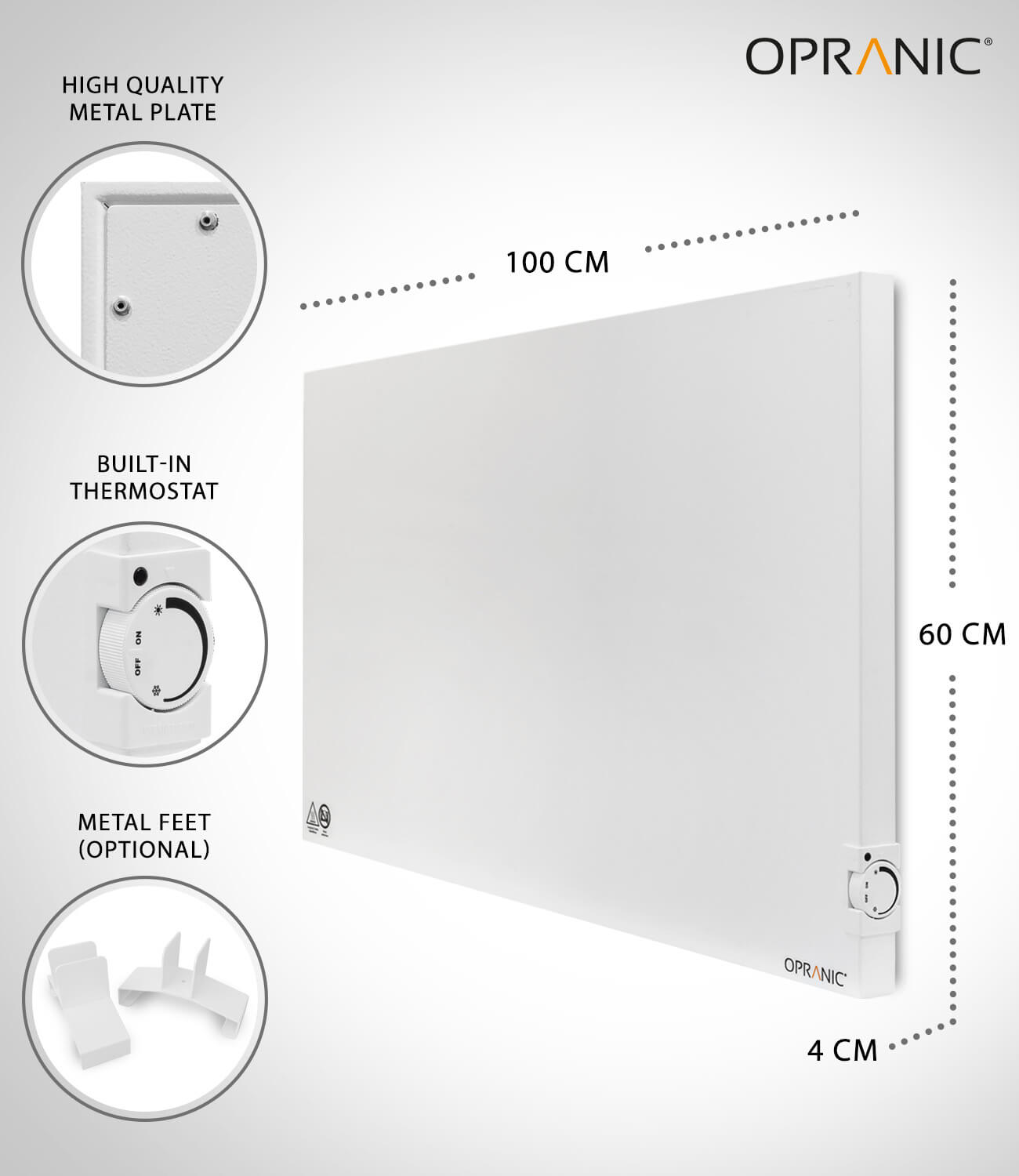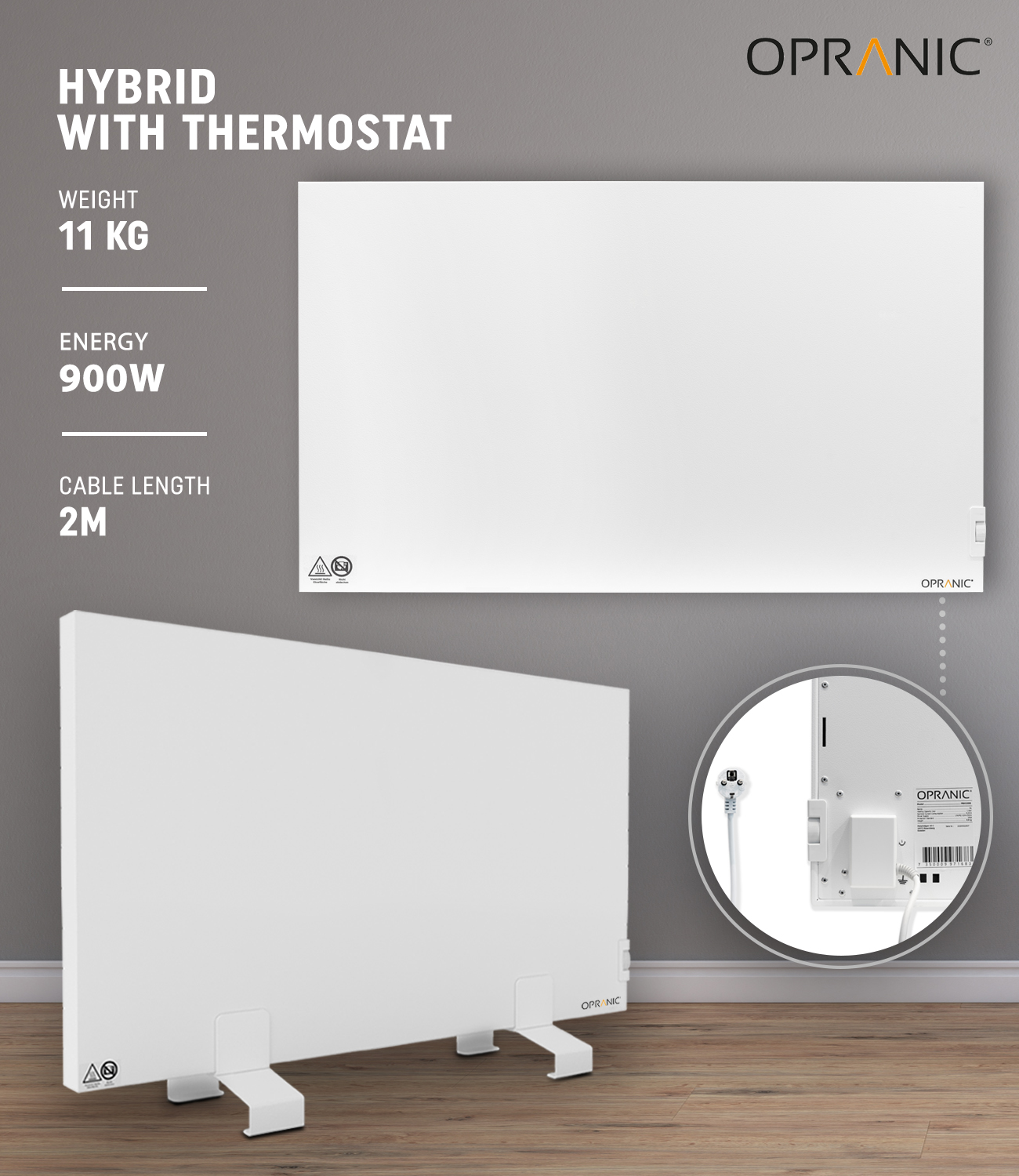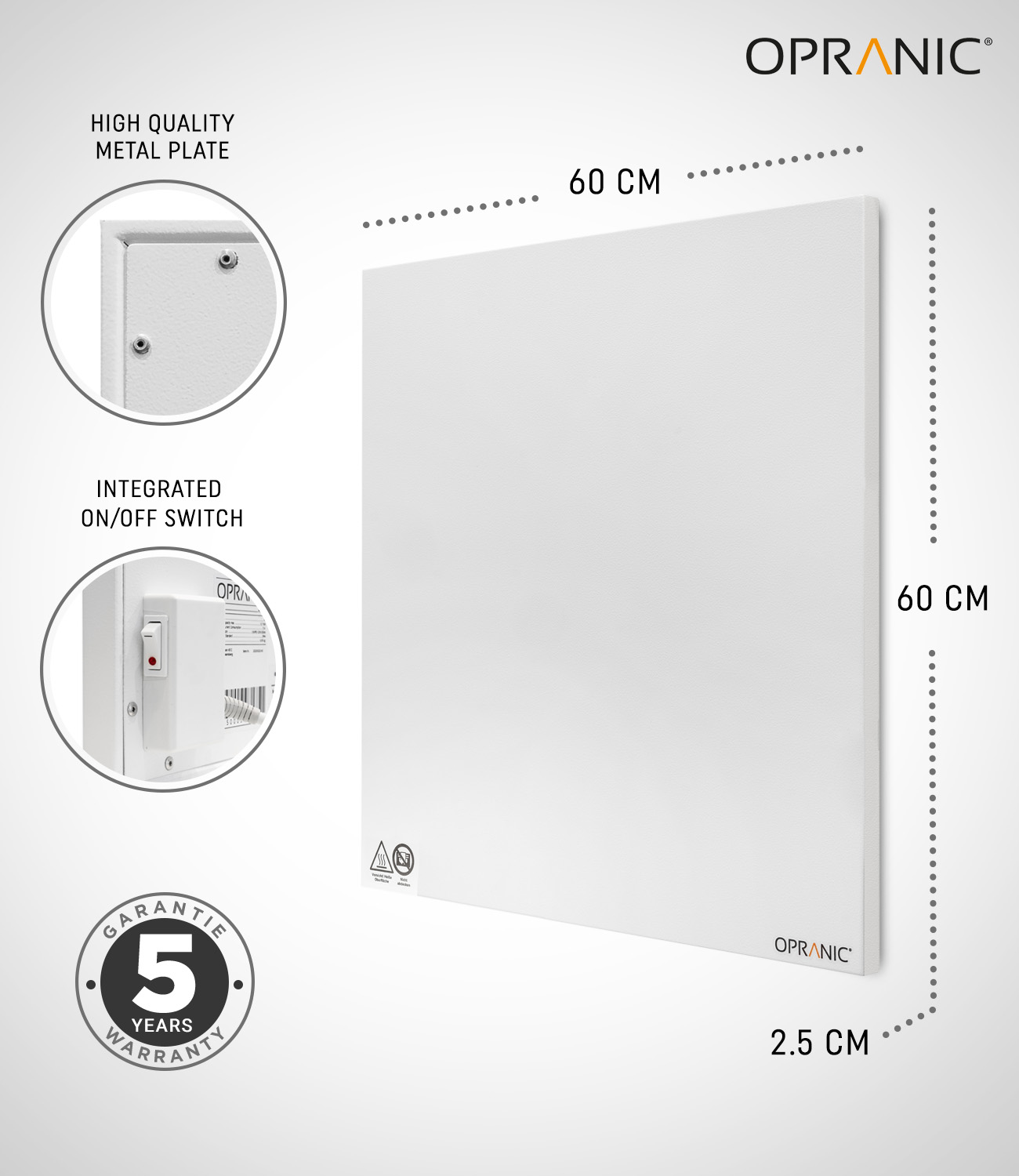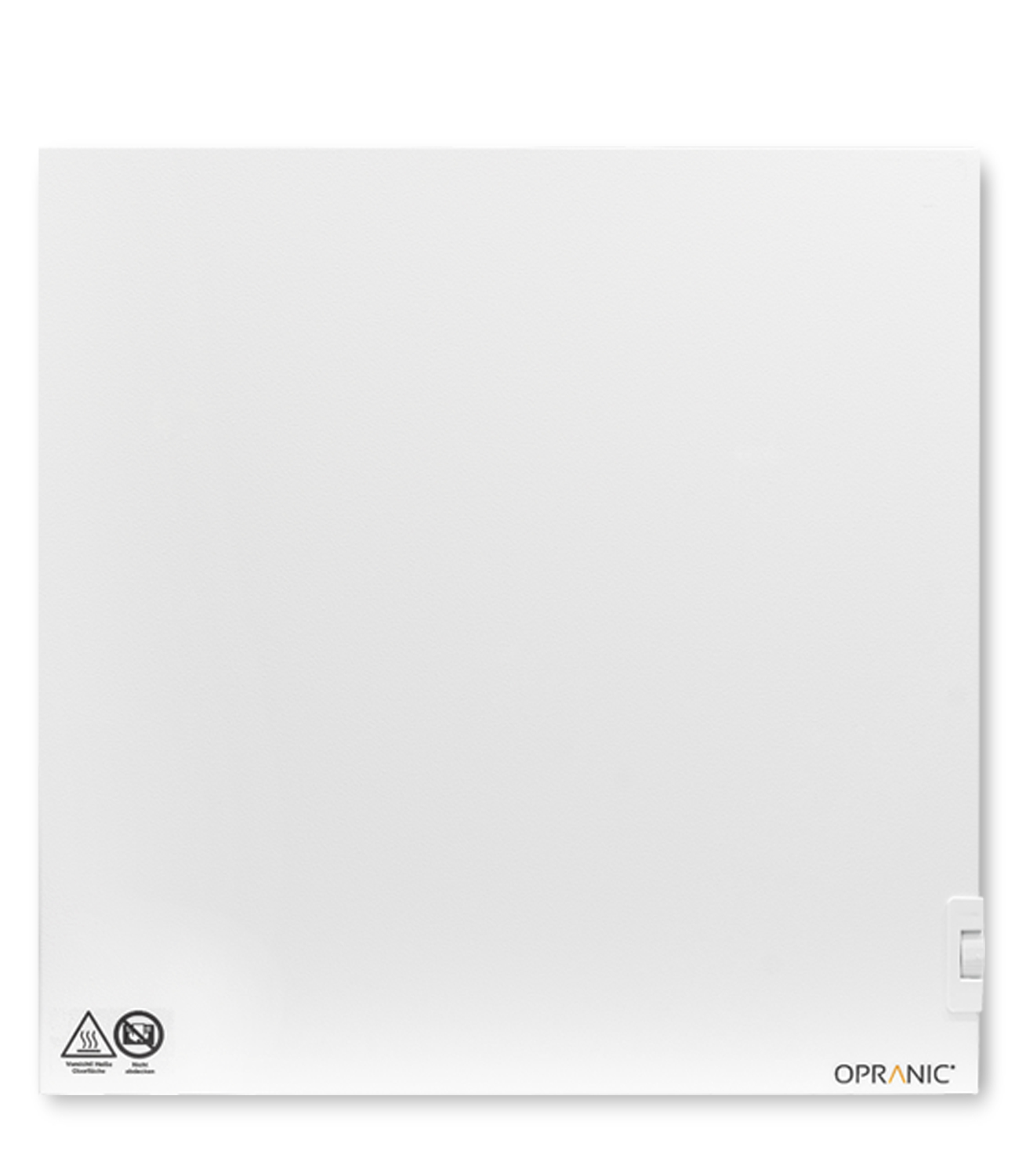The power consumption of infrared heating is an important issue when considering heating with infrared. Heating with infrared provides on-demand heat, which alleviates concerns about electricity consumption. The infrared heating costs vary depending on the heating output of the devices, the building insulation and the number of external walls.
The electricity consumption of infrared heating depends on various factors, such as the output of the heater, the size of the room to be heated, the duration of use and the desired room temperature.
These electric heaters only use electricity when heat is generated, which makes them more economical for on-demand use.
Power consumption for infrared heating and energy efficiency
To calculate the electricity costs for infrared heaters, you need to know the electricity price per kilowatt hour (kWh) and the output of your heater in watts.
For example, if you have a 900 watt infrared panel and an electricity rate of €0.4/kWh, the cost would be approximately €0.36 per hour of operation.
This rate applies if the electric radiator runs at full power for 1 hour.
Calculation of operating costs for infrared heaters
However, the actual operating time depends on various factors, such as the insulation of your region, the outside temperature, the size of the room and the desired heat output.
These factors influence how long the heater has to run in order to achieve a comfortable level of warmth in the room.
For example, if you have a 50 m³ room and use a 900 watt heater for a total of 4 hours per day, at a cost of €0.4 per kilowatt hour, the cost would be approximately €1.44.
The actual operating time depends on the insulation of your building and the desired heating output.
A well-insulated home will require less energy to stay warm, while low outside temperatures may require more energy to heat.
The size of the room to be heated also influences the power consumption of infrared heating.
Larger rooms require more heating power and therefore consume more electricity.
Powered by electricity, infrared heating generates pleasant warmth in the room, which can be felt immediately through heat waves.
Efficiency and economy of infrared heating
The cost of infrared heating in operation also varies depending on the output and quality of the infrared heater.
Efficient conversion of electricity into heat without energy loss justifies higher heat output for every euro you pay.
OPRANIC electric heaters use modern infrared technologies.
These help to save more energy by converting most of the electrical energy into heat.
Compared to other systems on the market, OPRANIC infrared heaters offer up to 35% higher surface temperature.
Power selection and energy efficiency of infrared heaters
You can calculate the power requirement per square meter.
OPRANIC infrared panel heaters use advanced resistance and nanotechnology silicon wires to save energy and maximize the energy efficiency of infrared heating.
These space heaters achieve an impressive energy conversion rate, converting approximately 98-99% of electrical energy into heat.
Opranic infrared electric heaters provide up to 35% more surface heat compared to similar systems on the market.
Infrared heaters: Efficient and cost-effective alternative to conventional heating systems
Infrared heaters use the properties of infrared radiation to heat rooms efficiently.
Unlike conventional heating systems, which heat the air, infrared heaters heat the surfaces in the room directly.
This distributes the heat evenly throughout the room and creates a pleasant indoor climate.
Infrared heaters are a modern and energy-efficient alternative to conventional heating systems that are powered by electricity.
Compared to conventional heating systems, infrared heaters offer many advantages, such as lower electricity consumption and lower costs.
Advantages of infrared heating
Infrared heaters complement conventional radiators.
One energy-efficient method is to heat the entire house only moderately and use infrared heaters in selected rooms.
This saves energy by not heating the whole room to the same high temperature.
Infrared heaters offer the flexibility to heat individual rooms without having to activate the entire heating system.
This is particularly advantageous if you only need heat in certain areas.
Electricity consumption with infrared heating: Practical tips for optimizing costs
To optimize the power consumption of infrared heating and the costs of infrared heating, you can also take certain measures.
Using a thermostat can also help to regulate the temperature and reduce electricity consumption.
Infrared heaters work in intervals, so the actual hourly price may be lower than the theoretical maximum price.
Good insulation of walls and windows can minimize heat loss and reduce energy consumption.
The use of infrared heating in new buildings can lead to lower heating requirements due to the good insulation.
Therefore, infrared heating rarely works as the heat remains trapped in the room and does not escape.
This feature makes infrared heating ecologically advantageous, especially when using a green electricity tariff, as it enables resource-saving heating.
Infrared ceiling heating is a good option for old buildings with poor insulation.
It heats up certain areas and saves energy.
The use of infrared heating in new buildings is particularly recommended.
New buildings with good insulation are ideal for infrared heating.
Since infrared heating panels require less heat compared to older buildings, it is cost-effective and efficient.
Long-term cost efficiency
Another aspect you should consider when calculating electricity costs is the lifespan of the infrared heater.
A high-quality heater with a long service life can be more cost-effective in the long term, as you will need to buy spare parts or replace the heater less frequently.
Infrared heaters are often cheaper to buy than conventional heating systems as they do not require complex installation.
It is also advisable to check the electricity price regularly, as tariffs can change.
Infrared heaters are a popular choice for heating rooms as they offer an efficient and cost-effective alternative to conventional heating systems.
However, it is important to keep an eye on the electricity consumption of infrared heating and the associated costs.
Placement plays an important role in the energy efficiency of infrared heaters
The correct positioning of infrared radiators is crucial for efficient heating.
The power consumption of infrared heaters can be further reduced by correct positioning.
Make sure that curtains or furniture do not cover them in order to distribute the heat effectively.
It is therefore advisable to position the infrared radiators so that they cover the entire room with radiant heat.
However, it is important not to point them directly at the window.
For efficient heating of higher rooms, it is advisable to buy an infrared heater.
The heat wave that hits the window can cause the heat to escape.
The glass does not absorb or store the heat well.
Therefore, the heat generated by the room heater can escape through the windows.
To avoid this, position the infrared radiator so that its radiant heat is absorbed and retained by the walls, floor and objects in the room instead of directing it towards the windows.
The room height also plays a decisive role when calculating the required output.
If your room has a greater height, you will need to include this factor in your calculations.
To decide whether you should install your infrared electric heater on the wall or on the ceiling, you need to consider a few factors.
Infrared heaters on the ceiling ensure even heat distribution in the room.
However, if your ceiling is too high, the infrared waves can travel a longer distance to reach the objects, making wall-mounted heaters a more efficient choice.
With wall heaters, it is important to position them so that they are directed towards the open space, with no obstructions preventing the waves from reaching objects and furniture throughout the room.
Wall-mounted infrared heaters are suitable for rooms with open spaces.
Our ceiling-mounted infrared heaters save space and distribute the radiant heat evenly.
You can install our P5 series radiators on the ceiling as they are only 2.5 cm thick and are therefore perfect as ceiling heaters.
The P5 series is also great as wall heaters, especially when a minimalist design is required, as they are seamlessly integrated into the room with their white matt surface color.
On the other hand, our P6 series radiators are wall heaters that combine both infrared and heated air heating technology.
This hybrid function enables P6 to achieve energy savings, especially in rooms with standard room heights.
Advantages of infrared room heaters
- Uniform room heating
- Pleasant room climate
- No air turbulence or mold formation
- Simple installation
- Good for health (allergy-friendly and beneficial for circulation)
Enjoy a pleasantly warm and cozy room climate with high-quality OPRANIC room heaters.
You can install our heaters as ceiling heaters, wall heaters or portable heaters.
Get your infrared panel heater from OPRANIC, perfect for every room!
